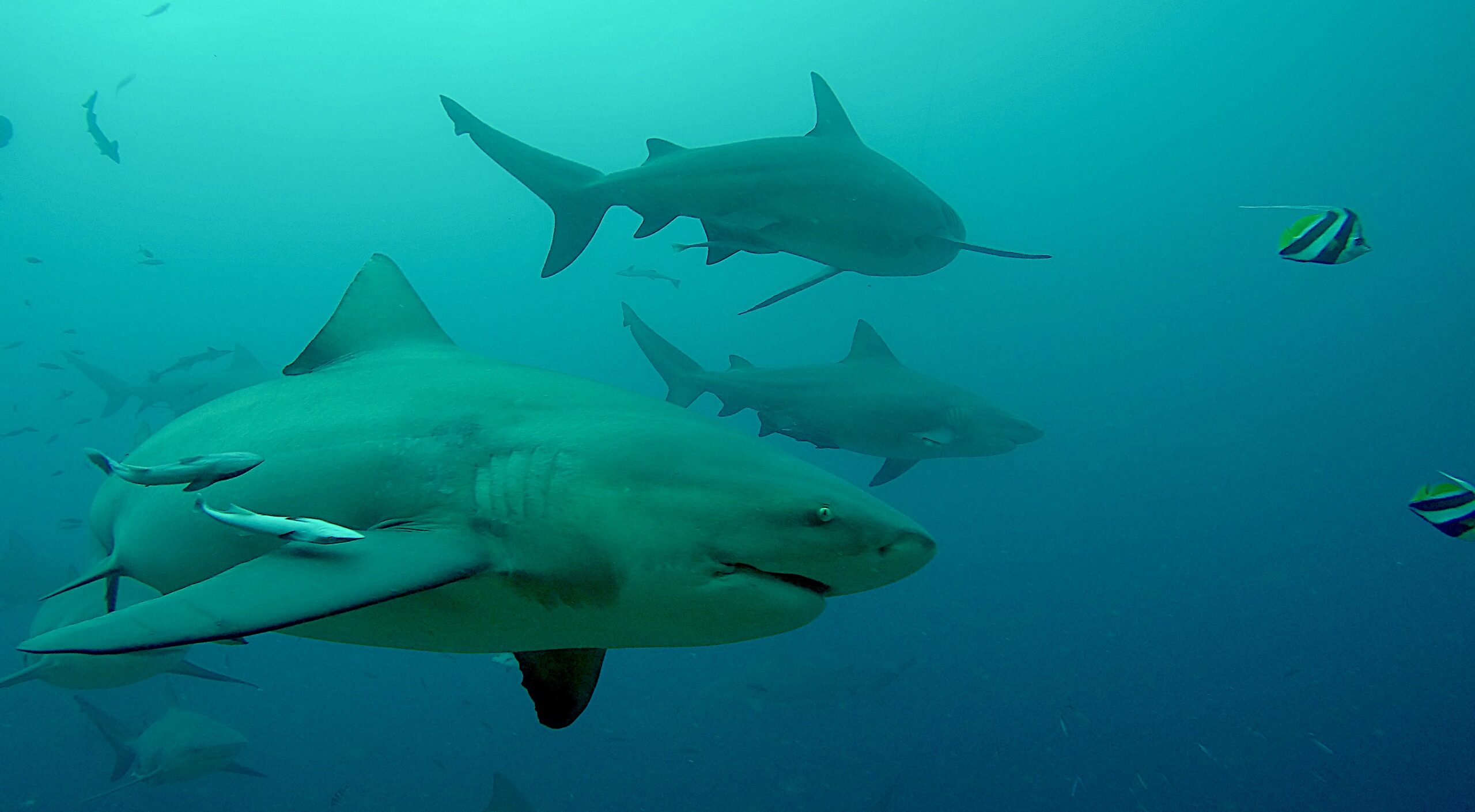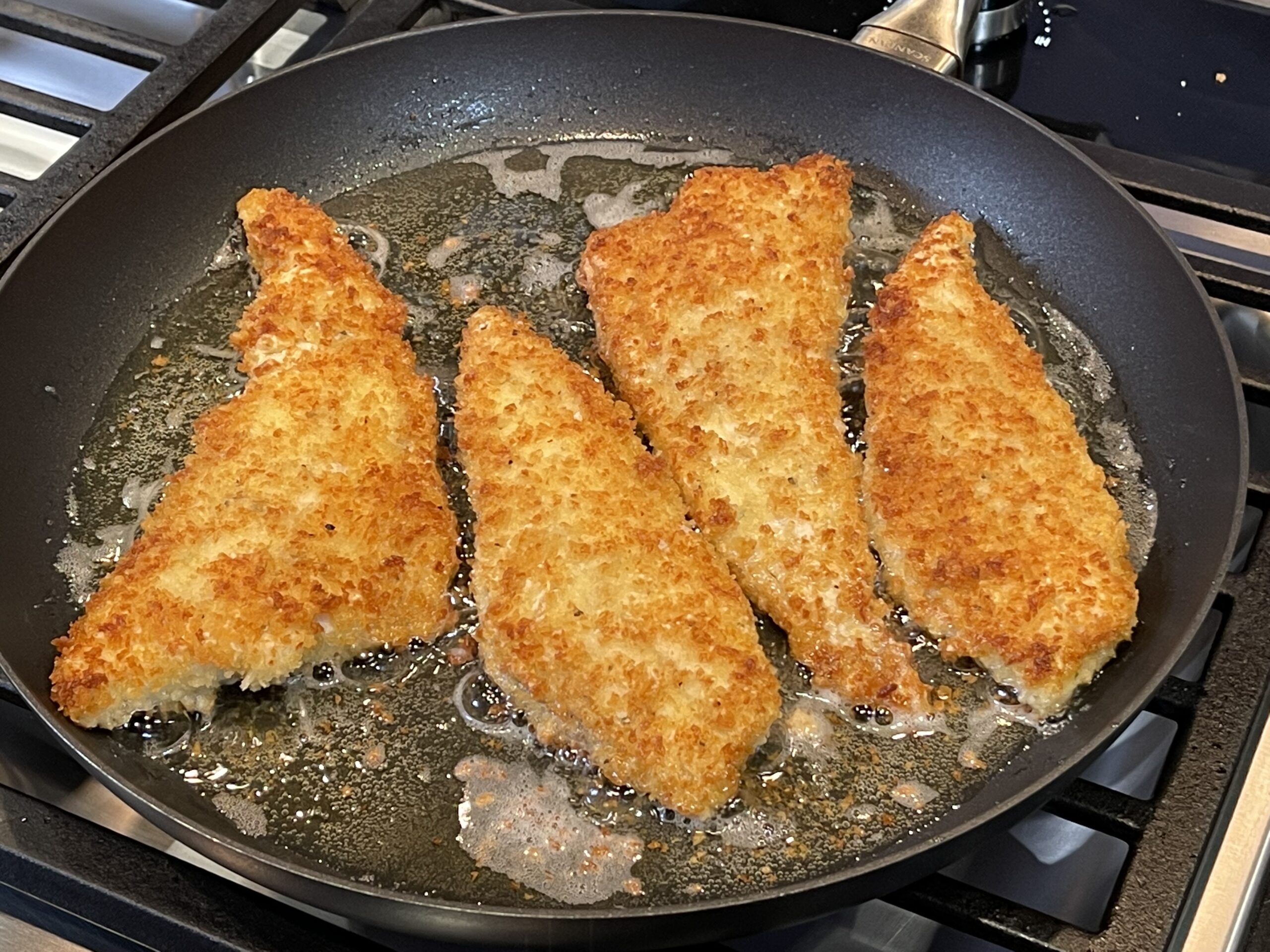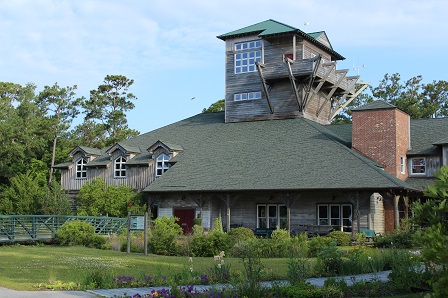Commercial fisherman Chris Hickman does not like the word “anecdotal.”
Hickman has been fishing for 39 years, most of them in the waters around Cape Hatteras. In that time, he’s seen fishery management decisions made using data that do not reflect what he and other fishermen experience on the water.
“If they’d just send researchers out with us, they’d see what it’s really like,” he says. So he brings researchers out on the water with him.

In February 2013, Hickman brought me and fellow doctoral student Andrea Dell’Apa to some spots off Hatteras and Ocracoke that he and his fellow gillnetters had been avoiding. On our way out, other captains vented their frustrations over the radio about not being able to get away from the “biters.” We headed toward the places they were talking about, because biters, or sharks other than spiny or smooth dogfish, were exactly what we were looking for.
We set a 400-yard gillnet in a seemingly nondescript patch of water within sight of the beach and waited half an hour. Although the net was the length of four football fields, the high-flyer buoys marking either end seemed very close together in the ocean.
Compared to the overnight or multiday soaks used during true commercial fishing, half an hour is no time at all.
Yet, in a sampling period that Hickman described as a “microdot,” I saw more sharks than I’ve ever seen in one set. And these were not spiny dogfish, a commercial shark species that typically is abundant in North Carolina waters. These were the biters that the other Hatteras fishers were warning each other about.
An even 100 sandbar sharks, all of them juveniles, were picked out of the net, quickly filling the live well in a mass of fins and teeth. Almost as an afterthought, an adult smoothhound and juvenile dusky shark came up. Several large, flat angel sharks and bullet-shaped false albacore also were caught. And that was just the first set of a full day of sampling.
By the end of the day, nearly 200 sandbar sharks would be measured and released, 15 of them carrying acoustic transmitters to track their long-term movements. One of the three juvenile dusky sharks caught over the course of the day also would be tagged. Smoothounds, Atlantic sharpnose sharks and even a 6-foot scalloped hammerhead also would make appearances.
For a gillnetter trying to avoid sharks, this location would have been a nightmare. However, as researchers — with appropriate permits — looking to document and tag as many sharks as we could in a single day, it was like striking gold. Thanks to the acoustic tags we were able to deploy, the Cape Hatteras shark gold mine just may pay off for fisheries science.
WORKING TOGETHER
Dell’Apa’s tagging project was funded by the N.C. Fishery Resource Grant program, which is administered by North Carolina Sea Grant. For about 20 years, this state-funded program fostered cooperative research among commercial fishers, recreational anglers, seafood businesses and university researchers to tackle coastal issues. In fact, the majority of support for our acoustic telemetry projects has come from the FRG program.
But our research wasn’t always about coastal sharks. Roger Rulifson’s fisheries biology lab at East Carolina University has been studying sharks — mostly spiny dogfish — for 17 years. Sea Grant has been a consistent partner in the lab’s shark research since the first project in 1997, when Rulifson started to work with Hickman. It was a large-scale tagging project focusing on dogfish overwintering off North Carolina waters.

The concerns and observations of fishers have long provided inspiration for the lab’s research, and fishers have made great collaborators over the years. For his part, Rulifson has been impressed with the results of the body of cooperative work conducted.
“They were coming from different perspectives — experience on the water — and had definite ideas of what would or would not work in our projects,” Rulifson says of the fishers we’ve worked with. He praises the captains for their willingness to experiment with innovative approaches to help the scientists conduct their on-water experiments.
“Above all,” he continues, “they were respected in their communities and certainly earned our respect with their patience, catered to our needs and were willing to go an extra mile — or two! — making sure we completed our studies.”
Hickman has been a part of our lab’s work off Hatteras ever since, collaborating on traditional and acoustic tagging studies, assisting with array maintenance, participating in the spiny dogfish management symposium hosted by the lab in 2007, and providing a window into the Cape Hatteras fishing community.
TRACKING SHARKS
In 2008, Rulifson’s lab deployed an array of acoustic receivers stretching 12 miles into the Atlantic Ocean just south of Cape Hatteras, and has maintained it ever since. The array was originally set up by Rulifson and doctoral student Jennifer Cudney to document the presence of spiny dogfish south of the Hatteras Bight as part of a Sea Grant-funded study.
The array was next used by Dell’Apa, also supported by Sea Grant, to find, tag and track juvenile spiny dogfish and possibly identify nursery habitat in the area. Though plenty of adult dogfish were encountered, juveniles proved to be difficult to find. However, other sharks were frequently caught in the process of fishing for dogfish: sharpnoses, duskies, sandbars, even the occasional thresher. Most of these sharks were well within the juvenile size range for their species.

After riding along with Dell’Apa on some of his sampling trips and seeing the diversity of sharks present around Cape Hatteras, I became interested in the potential for coastal shark nursery habitat in these waters. In late 2012, the juvenile dogfish-tagging project officially became a juvenile coastal shark project, with six species chosen for acoustic tagging: targeted species, such as blacktip, sharpnose and smoothhound sharks; and species of conservation concern, including dusky, hammerhead and sandbar sharks. These species were selected for their importance in coastal shark fisheries.
Sharks are captured using short gillnet soaks, identified, measured and released. Juveniles in good condition are chosen to receive acoustic tags. Candidate sharks are placed in a state called tonic immobility, where they are functionally unconscious. Kept alive with a seawater hose to maintain water flow over the gills, each shark is surgically implanted with a uniquely numbered acoustic transmitter before being released.
Everyone participating in shark tagging receives training in survival surgery — basic medical procedures to ensure the animal’s long-term survival. Our methods have been approved and permitted by both ECU’s Institutional Animal Care and Use Committee, and the National Marine Fisheries Service.
Once deployed, these transmitters “ping in” when the shark swims within detection range of one of the receivers on our array. The receiver records the ID number, date, time and other transmitted data. The tags I’m using broadcast depth and temperature measurements from the shark’s location, which give an idea of its habitat preferences. All of these data are then downloaded from the receivers for analysis.
Our tags can be picked up by arrays deployed by government agencies and research institutions up and down the East Coast from Maine to Florida. Also, we frequently detect tags deployed on other species by other researchers. All data are shared through the Atlantic Cooperative Telemetry Network. This group of researchers conducting acoustic telemetry studies on the Atlantic Coast make sure detection data get to the original researcher, regardless of where the tagged animal pings in. Being a part of the ACT network allows us to see where our tagged sharks go once they leave Cape Hatteras.
ANECDOTES BECOMING DATA
While many Hatteras fishers target spiny dogfish in the winter, they generally try to avoid interacting with other sharks. The coastal shark species, managed by NMFS as large coastal or small coastal sharks, are a diverse group with a variety of life histories, making some more vulnerable to fishing pressure than others. However, some shark species can be difficult to identify. Vulnerable species often are caught alongside other species with more robust populations.
Among the shark species sampled in February 2013, two would have been illegal for Hickman to possess without research permits. Dusky sharks are prohibited altogether in commercial fisheries. Sandbar sharks can only be landed as part of a limited-access research fishery. On a normal day of fishing, Hickman would have spent all that time picking through a net full of catch he isn’t allowed to keep.
The goal of this study is to use the information gathered from sampling trips and the tagged sharks to further refine shark fishery regulations by providing managers with data. Improved regulations will allow fishers to better avoid species that need a break from fishing pressure while increasing access to more abundant species. Survival of younger generations of coastal sharks is critical to maintaining populations of these long-lived, late-maturing species, so identifying nursery habitat is important. By collaborating with fishers such as Hickman, it may be possible to turn their observations into hard data.
As fisheries management at the federal and state levels seemingly becomes more dependent on modeling and simulation, Hickman sees collaboration with scientists as a way that fishers can be a part of the process. “Even if you find out something that doesn’t help me, at least I saw where it came from,” he says. “Assumptions in the science kill us. If you can remove just one assumption, it will be worth it.”
Following up on his observations already has begun to provide important information about the sharks off Cape Hatteras. Other tagging trips were conducted in April and November last year, in which two more species — spiny dogfish and common thresher sharks — were added to the list of sharks encountered. Visibly pregnant sharpnose and smoothhound sharks were documented, another sign of the importance of the Hatteras Bight as a nursery area. Another juvenile dusky shark has been acoustically tagged. We hope our data will provide crucial information on this poorly understood species of concern.

So far, nine of the 15 tagged sandbar sharks have been recorded either on the Hatteras array or an array maintained by the U.S. Navy at the mouth of the Chesapeake Bay. They are revealing some interesting migration and movement patterns. The tagged sharks remained in the vicinity of Cape Hatteras until April, then were detected in and around Chesapeake Bay from May to August. The next data download should tell us whether any of these sharks returned to Cape Hatteras last fall.
Our lab will continue to expand our tagging efforts. The acoustic tags will transmit until their batteries run out in approximately two years. That should be long enough to identify areas that the sharks visit repeatedly during their annual migrations. We also are conducting interviews with area fishers to see how well our migration and habitat preference data match up with what they’ve been seeing on the water.
The observations of the fishing community have been very helpful in our efforts to understand the importance of this dynamic environment to the ocean’s apex predators. Our work started with the humble spiny dogfish, and has expanded to include species that currently are being discussed for listing under the federal Endangered Species Act. The consequences of shark management decisions will profoundly affect fishers. Thus, it’s crucial that their observations be part of the science informing those decisions. After all, the scientific method is all about testing observations.
This article was published in the Winter 2014 issue of Coastwatch.
For contact information and reprint requests, visit ncseagrant.ncsu.edu/coastwatch/contact/.
- Categories:



